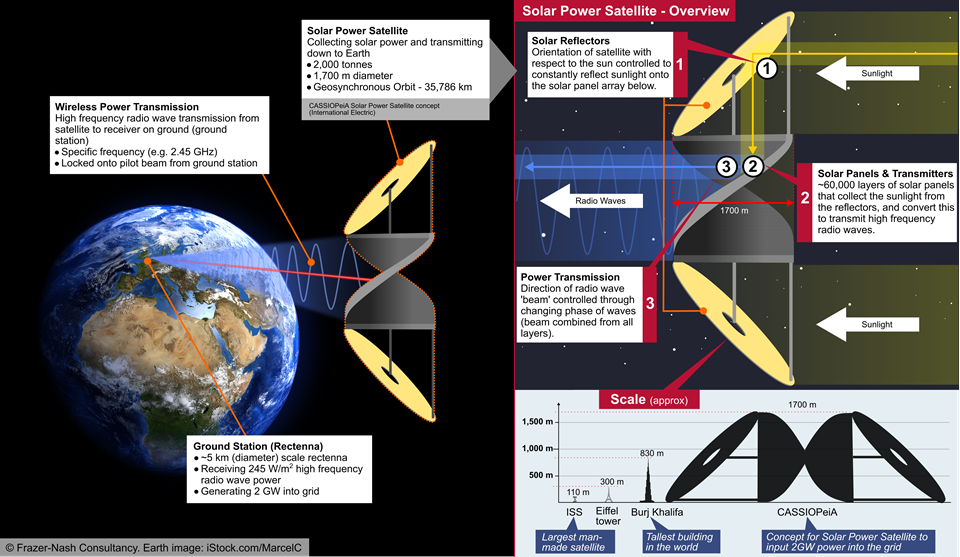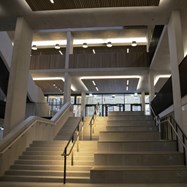Harnessing the power of the sun - science fiction into fact
Researchers at the University of Southampton are working on the technologies needed to enable us to harness the sun’s energy from space.
Space-based solar power (SBSP) is poised to answer our ever-pressing need for new sources of clean energy.
The concept of SBSP was first described by science fiction writer Isaac Asimov in his 1941 short story, Reason. Back then, the idea of harvesting the sun’s energy and beaming it back to Earth was for the imagination only. Ever since the ‘70s, researchers have investigated different SBSP proposals – but the cost of the technology and launching it into space has always been far too high.
However, pioneering research at the University of Southampton, is set to make SBSP a reality within the next decade.
What is SBSP?
SBSP is concept of harvesting solar energy via an assembly of huge solar panels in high Earth orbit, converting it to RF (radio frequency) in the form of microwaves, transmitting that down to Earth where it is reconverted back to DC (direct current) electricity and fed into the grid. The energy will be received by a rectenna (a rectifying antenna), most likely located offshore and potentially next to a wind farm where there are already connections to the grid.
The systems deployed into space to enable this would be huge – several kilometres in length, and by far the largest system ever to have been built in space. But the system would be modular and would be assembled in-situ by autonomous robotic systems.
Southampton expertise
New materials, beam alignment capabilities and space reflectors are among developments being made at the University of Southampton.
Professor Otto Muskens and Dr Kai Sun, from the University’s Integrated Nanophotonics Group, are developing metasurface thin film coatings for temperature control in space, to enable the sun’s energy to be absorbed without the solar panels burning up.
Dr Mohammed El-Hajjar, Associate Professor in the University’s Next Generation Wireless research group, is working with the Space Energy Initiative focusing on the beam steering aspect of SBSP, to enable accuracy of the wireless power transfer.
Dr Nina Vaidya, Lecturer/Assistant Professor in Astronautics and Spacecraft Engineering, recently joined the University of Southampton from the California Institute of Technology, where she invented a new type of space reflector for collecting the sun’s energy.
Read the full story, and lots more about space-related research at the University of Southampton, in the Space at Southampton 2022 magazine.

-
Hamir Patel
hamir.patel@russellgroup.ac.uk
020 3816 1316
-
Stephanie Smith
020 3816 1310
-
Douglas Dowell
douglas.dowell@russellgroup.ac.uk
020 3816 1312
 X
X


